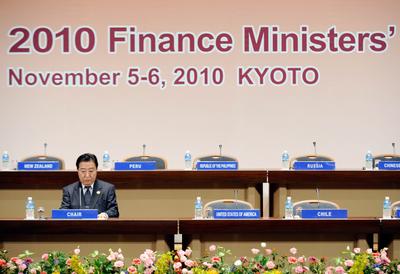Asians have assumed new weight in the G20 and Bretton Woods institutions. In May, as part of a general increase in capital, rich countries agreed to give up 3.1 percentage points of voting shares in the World Bank and to give emerging economies greater voting power. Bretton Woods is hardly the only table that matters in international relations. But the agreement made India the number seven shareholder in the Bank, with greater voting power than Russia, Canada, Australia, Italy, and Saudi Arabia.
Still, Asia’s major economies have not become assertive actors on the global stage. Two central questions, then, will be whether and how Asia’s most successful countries leverage their economic success into global clout in 2011.
Looking back, three things strike me about 2010:
First, Asia consolidated its role as the essential player, driving global recovery. Developing Asia, including China, India and five major ASEAN nations, maintained or exceeded 6.5 per cent economic growth in 2008 and 2009, a stark contrast to the advanced economies’ collective negative growth over the same period. Indeed, while the advanced economies are predicted to muster 2.1 per cent growth in 2010, this will be easily outstripped by developing Asia’s 8.4 per cent economic growth for the year.
Second, Chinese demand now powers much of Asia’s growth. Just consider South Korea: Long one of Asia’s best performers, Korea’s economy contracted by 5.6 per cent in the fourth quarter of 2008. Yet it bounced back in 2010, with IMF projections reaching 6.1 per cent growth for the year, on the back of strong domestic, Chinese, Indian, and emerging market demand for Korean products. In fact, demand in China and Asia insulated South Korea’s economy somewhat from slowdowns in the US and Europe. So, persistent worries in Seoul about the export sector are as much about weakening demand in China, where growth is moderating, as they are about weakness in traditional markets.
Third, Asians continued to forge trade agreements and investment arrangements, often on a regional basis. By contrast, the US dithered until the eleventh hour on its free trade agreement with Seoul. One question for Washington will be whether — and how quickly — Washington gets back into the trade game in 2011.
My bet is that the dominant strategic pattern will be reinforced in 2011: Across Asia, Chinese demand is now a central driver of other countries’ economic growth, and, in many cases, China is the top trade partner. But Beijing’s long-term strategic intentions inspire deep anxiety.
As a result, economic and security policies will increasingly collide. Economic integration with China will tighten, but Asian countries will strengthen defence and political coordination with the US (and each other) as a hedge against Beijing’s expanding strategic weight.
Will 2011 be interesting? You bet.
At Eurasia Group, the political risk consulting firm where I run the Asia practice group, we’re watching several stories:
For one, currency intervention in Asia should rise as governments and central banks navigate the exchange rate thicket. US quantitative easing, inflation fears in emerging markets, and the effects of eurozone debt presage a tumultuous year for currency management in Asia. Governments will continue to intervene in markets, fiddle with interest rates, and potentially raise the cost of moving capital to limit both the pace and extent of currency appreciation.
Responses to inflation will diverge. Many governments will struggle to control inflation — the result of two years of expansionary monetary policies, government initiatives to limit currency appreciation, and food shortages from difficult harvests across Asia in 2010. The general goal will be to normalise monetary policies, but this will not happen at a uniform pace.
A new manufacturing geography will continue to emerge. Manufacturers in Asia confront higher labour, raw materials, and energy costs, and will reassess traditional production strategies more intensively in 2011. Already, we are witnessing a slow but visible relocation of some industrial production — within individual countries or within Asia — and significant upgrades of existing industrial bases. Trends suggest that China will become a more complex investment destination, featuring higher costs but also new consumer hubs. Lower-end manufacturing will expand to central and western China, or to Thailand, Vietnam, and Indonesia, yielding new intra-regional manufacturing and trade hubs in Southeast Asia.
Asia’s infrastructure build-out should accelerate, particularly in China and India but also in Southeast Asia. Improvements have lagged or been neglected for years in many countries. In some, financing will prove a challenge even as governments unveil supportive policies. The murky regulatory regimes and political constraints that persist in many less-developed Asian countries will be a hurdle. But investors should notice improvements, particularly in Southeast Asia.
To my mind, 2010 was a bellwether for Asia. But 2011 should be more significant still.
Evan A. Feigenbaum is Adjunct Senior Fellow for East, Central and South Asia at the Council on Foreign Relations.
This article was first published here by the Business Standard.

